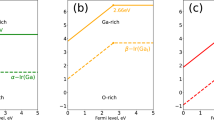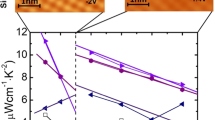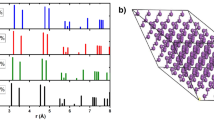Abstract
SOME semiconductors have comparatively low resistivity, and this is due to their containing electrically active impurities with energy-levels near a band edge. Others have very high resistivity and this is due to their containing a predominance of impurities with levels far from the band edges, that is, far compared with the thermal energy kT. These latter materials are often referred to as insulators, but since they can carry electronic currents we prefer to introduce the term ‘semi-insulator’ to describe them. A material such as cadmium sulphide, which by suitable choice of impurity content can be made a semiconductor or a semi-insulator, is of particular interest and much work has been done on cadmium sulphide in the past few years. Gallium arsenide is another substance with the same property, but has the advantage that both n- and p-type material may be readily prepared.
This is a preview of subscription content, access via your institution
Access options
Subscribe to this journal
Receive 51 print issues and online access
$199.00 per year
only $3.90 per issue
Buy this article
- Purchase on Springer Link
- Instant access to full article PDF
Prices may be subject to local taxes which are calculated during checkout
Similar content being viewed by others
References
Prener, J. S., J. Chem. Phys., 25, 1294 (1956).
Kröger, F. A., and Vink, H. J., Physica, 20, 950 (1954).
Wright, G. T., Nature, 182, 1296 (1958).
Author information
Authors and Affiliations
Rights and permissions
About this article
Cite this article
ALLEN, J. Gallium Arsenide as a Semi-insulator. Nature 187, 403–405 (1960). https://doi.org/10.1038/187403b0
Issue Date:
DOI: https://doi.org/10.1038/187403b0
This article is cited by
-
Long-lived quantum coherence in a two-level semiconductor quantum dot
Pramana (2020)
-
Certain characteristics of the energy spectra of impurity centers and charge-carrier scattering processes in high-resistivity GaAs(O)
Soviet Physics Journal (1976)
-
Galvanomagnetic and thermomagnetic effects in compensated gallium arsenide
Soviet Physics Journal (1969)
-
Space-Charge Currents in Gallium Arsenide
Nature (1961)
-
Energy-Level Model for High-Resistivity Gallium Arsenide
Nature (1961)
Comments
By submitting a comment you agree to abide by our Terms and Community Guidelines. If you find something abusive or that does not comply with our terms or guidelines please flag it as inappropriate.



